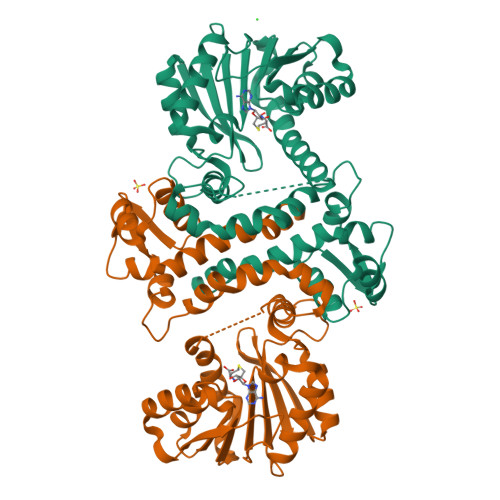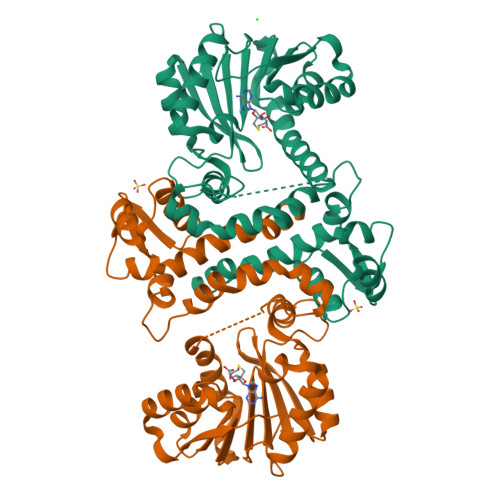Structure of methyltransferase RedM that forms the dimethylpyrrolinium of the bisindole reductasporine.
Daniel-Ivad, P., Ryan, K.S.(2023) J Biological Chem 300: 105520-105520
- PubMed: 38042494
- DOI: https://doi.org/10.1016/j.jbc.2023.105520
- Primary Citation of Related Structures:
8TJI, 8TJJ, 8TJK - PubMed Abstract:
Bisindoles are biologically active natural products that arise from the oxidative dimerization of two molecules of l-tryptophan. In bacterial bisindole pathways, a core set of transformations is followed by the action of diverse tailoring enzymes that catalyze reactions that lead to diverse bisindole products. Among bisindoles, reductasporine is distinct due to its dimethylpyrrolinium structure. Its previously reported biosynthetic gene cluster encodes two unique tailoring enzymes, the imine reductase RedE and the dimethyltransferase RedM, which were shown to produce reductasporine from a common bisindole intermediate in recombinant E. coli. To gain more insight into the unique tailoring enzymes in reductasporine assembly, we reconstituted the biosynthetic pathway to reductasporine in vitro and then solved the 1.7 Å resolution structure of RedM. Our work reveals RedM adopts a variety of conformational changes with distinct open and closed conformations, and site-directed mutagenesis alongside sequence analysis identifies important active site residues. Finally, our work sets the stage for understanding how RedM evolved to react with a pyrrolinium scaffold and may enable the development of new dimethyltransferase catalysts.
Organizational Affiliation:
Department of Chemistry, The University of British Columbia, Vancouver, Canada.





















